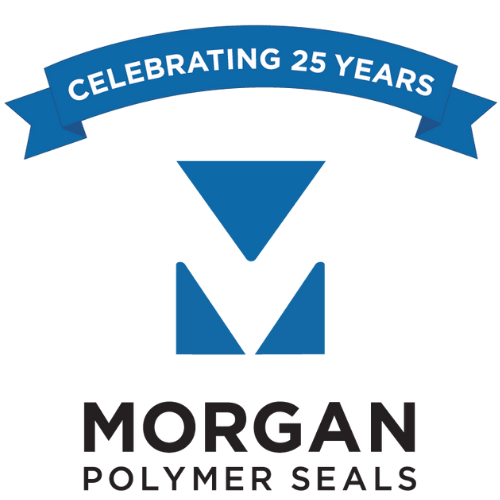Carrier Gaskets for Automotive Manufacturing
Introduction
Carrier gaskets are primarily used for sealing two flat surfaces, such as machined casting and metal pans. At Morgan Polymer Seals, we manufacture carrier gaskets in Mexico using a wide range of elastomeric materials, and we use steel, aluminum, or plastic as the carrier "backbone." The precise seal application and environment help to dictate the correct combination of materials to ensure a robust design. This article discusses carrier gaskets for automotive manufacturing, including their properties, design considerations, and manufacturing processes.
Properties of Carrier Gaskets
Our expert engineers design carrier gaskets with several vital properties to ensure proper sealing and longevity in automotive applications. These properties include the sealing environment (fluid exposure, pressure & temperature), durability, resistance to seal bead rollover, and ease of installation. Our engineering team reviews each application and collaborates with the OEM's engineers to determine which material best suits the application.
Plastic backbone with ethylene acrylic (AEM - Vamac®)
Elastomeric rubber is the most common material for carrier gaskets because of its excellent sealing properties and chemical resistance. Silicone offers excellent resistance to high temperatures and chemicals, but it can also have high compression set when exposed to aggressive automotive fluids used in today’s engines. Many automotive and heavy-duty truck applications use either fluorocarbon (FKM), polyacrylate (ACM), or ethylene acrylic (AEM - Vamac®), depending again on the sealing environment and fluid exposure for the application.
Design Considerations
Carrier gaskets are designed to a set of parameters that include flatness/rigidity of the mating components, bolt spacing, creep, compression set of the rubber, and the OEM’s specific design standards. Several factors need to be considered in the design process, including the type of material, the shape and height of the gasket, the available space for multiple seal beads, and the surface finish of the mating surfaces.
The choice of elastomer is crucial in determining the gasket's performance, and the material selected must have chemical resistance for the sealing environment. The shape and size of the gasket are critical aspects to ensure that it provides the necessary sealing force for the life of the application.
The thickness or height of the gasket is also critical to ensure that the appropriate sealing force is achieved since the carrier gasket and mating components combine to make up the sealing system for the joint. Factors such as load deflection - the force the seal exerts against the mating components - are critical and can be confirmed with a computer model such as FEA (Finite Element Analysis). Finally, the mating components' surface finish must be considered during the design phase.
Manufacturing Processes
The shape and material of the gasket dictate the manufacturing process. Rubber gaskets are often made using injection or transfer molding, while applications that require LSR (Liquid Silicone Rubber) are molded using a specialized injection process, allowing precise control over the gasket's shape and size. The material used for metal carrier gaskets can vary from steel, to aluminum; with stainless steel, copper and graphite being common choices for applications that require high temperature resistance.
In addition to the manufacturing process, tight quality controls are essential to ensure that the gasket meets the print specifications and our rigorous scrap standards. This is important since scrap includes both the rubber and carrier materials, which if not carefully controlled could result in a high scrap cost. We inspect each part carefully to ensure the part meets its print requirements, and to identify any defects or imperfections that could compromise its performance.
Rubber overmolded onto plastic carrier for capless refueling
View of carrier gasket installed in capless refueling system
Applications of Carrier Gaskets in Automotive Manufacturing
Elastomer carrier gaskets have a wide range of applications in automotive systems, including engine, transmission, and fuel system sealing. In powertrain sealing, carrier gaskets that use elastomer materials are typically used for front cover and oil pan applications. In transmissions, carrier gaskets are used to seal the transmission housing and pan.
Rubber molded onto metal carrier for windage tray
Conclusion
At Morgan Polymer Seals we have over 25 years of experience designing and manufacturing molded carrier gaskets for automotive OEMs. To learn more about our products and materials, visit our products page. Do you have a program that we can help with? Click below to contact us and a product specialist will reply immediately.





